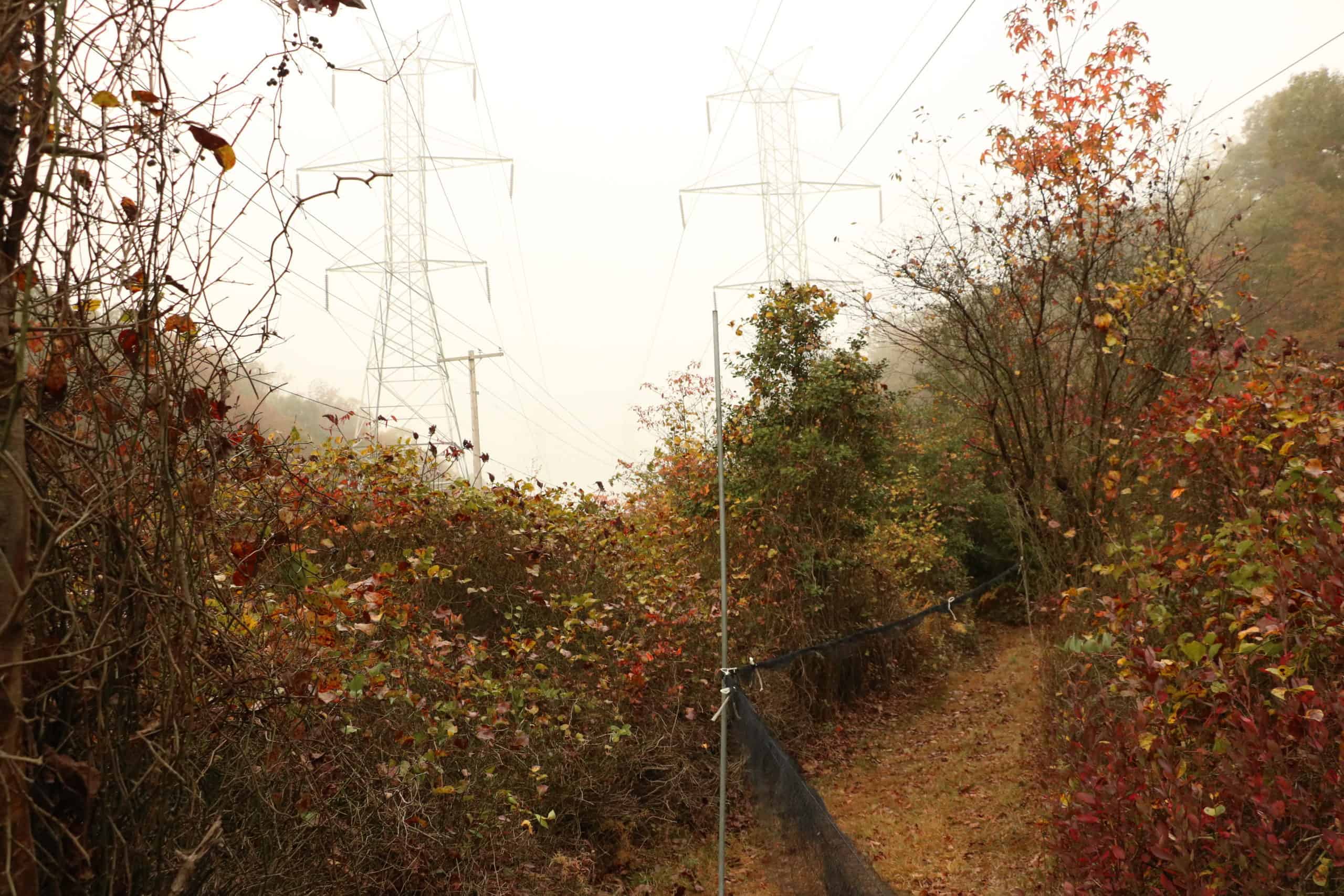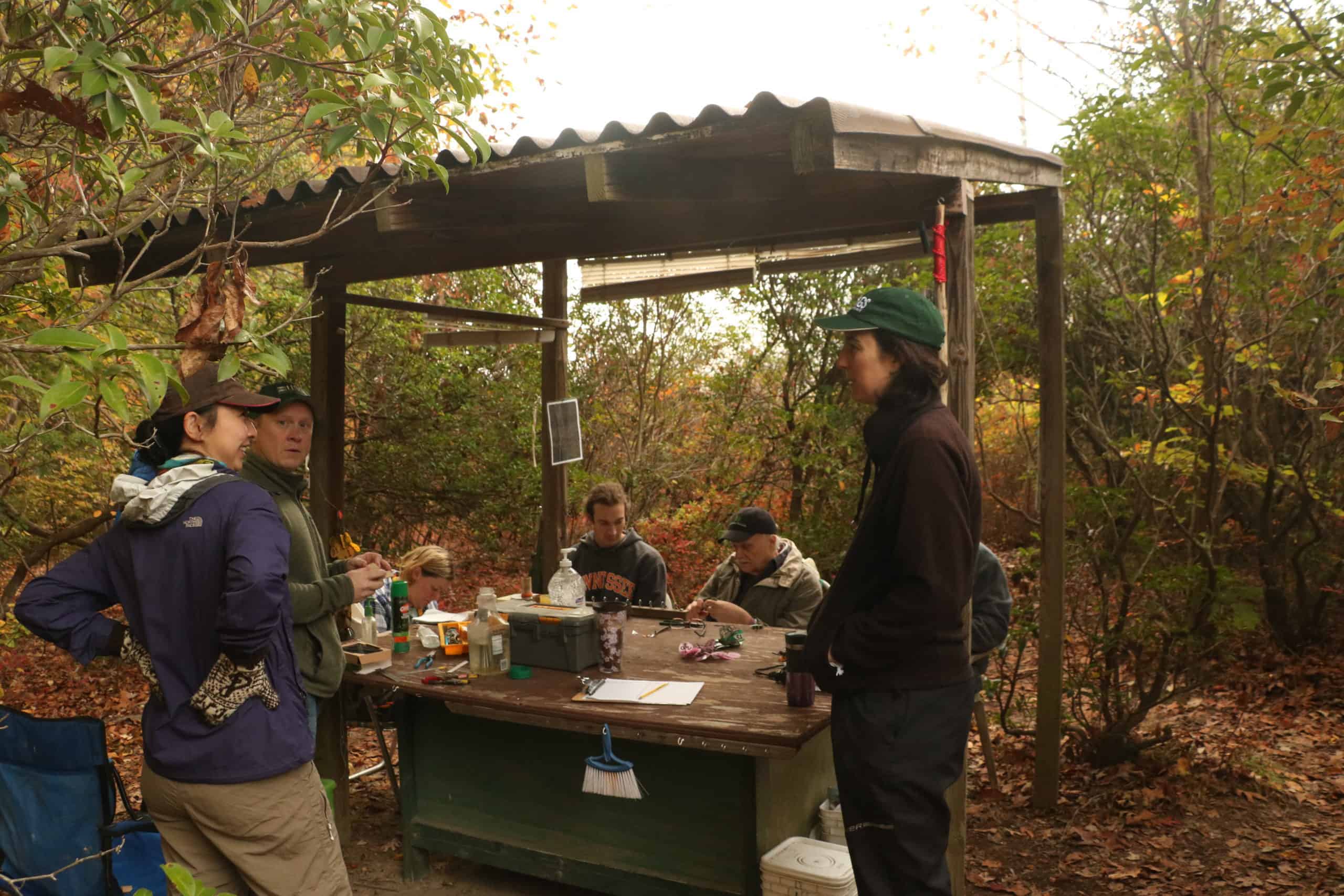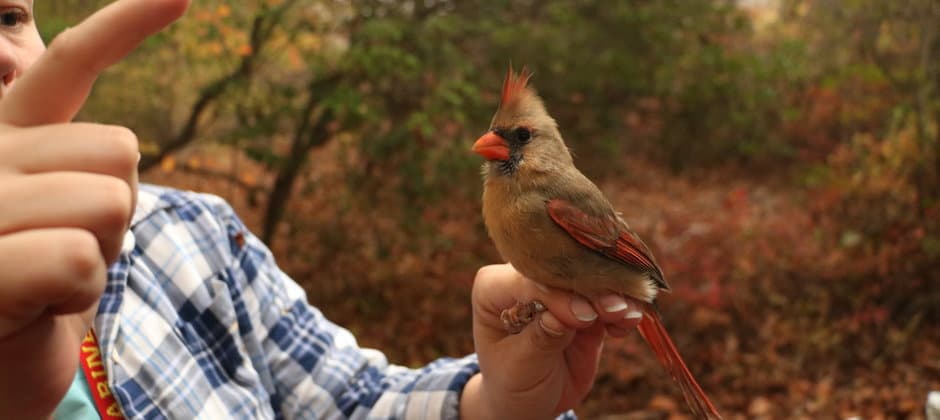Share this article
Research on the ground, change in the air
What’s the easiest way to hypnotize a blue jay? Try turning it onto its back and stroking its head.
This may not be helpful advice for most people, but it’s incredibly useful for biologists at the Patuxent Research Refuge to avoid painful blue jay (Cyanocitta cristata) bites while they collect age and sex data on the birds.
It was about 7:30 a.m. in mid-October, and the thick, surrounding shrubs at the refuge combined with a veil of mist that might have felt claustrophobic if not for the muted bird songs and a crisp breeze blowing through the nearby forest.
Enlarge

©Joshua Rapp Learn
TWS member Jennifer Malpass, a biologist at the Bird Banding Laboratory at the Patuxent Wildlife Research Center, walked with her colleagues through paths in a bushy cutline under a set of tall powerlines. Every so often they stopped at long mist nets that looked a little like they could be used for volleyball if they didn’t sit along narrow trails. The migratory birds had stopped at the refuge to fuel up on their southward journeys from the northern United States and Canada when they found themselves wrapped up in ornithology business.
Malpass and her colleagues delicately removed each captured bird, placed them into individual cloth bags and carried them back to their station where they would be aged, measured, weighed and banded. Save for rain or strong windy conditions, biologists have been banding birds at the refuge three times a week during late summer and fall since 1979, a corrugated metal roof the only guard from the weather at the banding table.
Wildlands and powerlines
Patuxent represents one of the largest green patches in an urbanized region that includes Baltimore and Washington, D.C., giving traveling birds a safe place to rest and stock up on food before continuing on to their wintering grounds.
Made up of wetlands, forests and meadows, the refuge also has a manmade feature that has proved beneficial to migrating birds — and to the researchers. The powerline easement the biologists walked is filled with berry-covered shrubs thanks to an agreement with the power company Pepco, which trims the area periodically but doesn’t mow it.
“When you do anything over the long term, you have some valuable data.”
“That provides great habitat for migrating birds,” Malpass said.
The database that Patuxent biologists have assembled has allowed researchers to track changes in population numbers and migration timing. It can also reveal changes in distant parts of the birds’ ranges. Insect outbreaks in their nesting areas may cause bird numbers to climb. Habitat loss or pollution may cause them to fall.
Enlarge

©Joshua Rapp Learn
Beyond what it offers to research and monitoring programs, bird banding helps connect the public with science, Malpass said. While many bird bands will never be recovered, when hunters take game birds, or when a banded bird strikes someone’s house, curious people can enter the identification number at www.reportband.gov to find out more about it. Occasionally, a bird banded here in Patuxent is found thousands of miles away.
“People are really excited to hear where the birds are coming from and where they might be going,” Malpass said.
Net change
USGS wildlife biologist Danny Bystrak has been working with the banding station since its first trial run in 1979. Famous at the station for his quick work, Bystrak can band birds and process them in under a minute, reducing the stress they experience while they’re being handled. He may also reduce stress on the researchers, who goad him to tell stories as they wait for the next round of mist net checks — a process that takes place on a strict timeline.
Bystrak has been doing this work long enough to notice shifts in Patuxent’s bird populations himself. Swainson’s and gray-cheeked thrushes (Catharus ustulatus and Catharus minimus) don’t show up in the numbers they used to, he says. Biologists used to band 300 or 400 ruby-crowned kinglets (Regulus calendula) each year. Last fall, they saw fewer than 100 of the tiny songbirds, which have red feathers resembling a mohawk on their heads.
“For many years, it was one of our most common species,” Bystrak said.
It isn’t just numbers. Bystrak said he’s noticed a drop in species diversity. “We’re not getting as many unusual birds,” he said, although a few unexpected species from the south are beginning to creep northward — possibly also due to climate change. In 2019, the station captured a painted bunting (Passerina ciris), a species rarely captured farther north than North Carolina.
"People are really excited to hear where the birds are coming from and where they might be going"
Other researchers have confirmed that significant changes are taking place there. Students working on a research poster studied the refuge’s records and found that for its six of its most plentiful species, migration timing has shifted, likely due to climate change, thou.
“Ours was a good database to use,” Bystrak said. “We’ve been pretty consistent in the way we collect the data.”
In quick succession, Bystrak measures each beak, wing and tail, looks for signs of fat on the breast, checks the head for signs of a fused skull — an indication of age — and latches a tiny metal band with a unique identification number onto a leg. A colleague places the bird upside down in a toilet paper roll and weighs it. By the time the bird is set free, Bystrak is on to the next one, calling out numbers to a colleague who records the data, as biologists at the center have done for over 40 years.
“When you do anything over the long term,” he said, “you have some valuable data.”
Header Image: Chelsea Steinbrecher-Hoffman, a contractor with U.S. Geological Survey, distracts a recently banded northern cardinal (Cardinalis cardinalis) to keep it from biting. ©Joshua Rapp Learn








